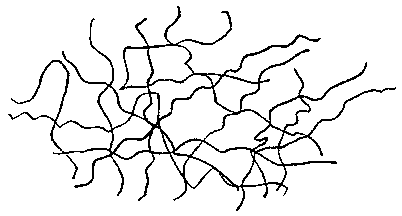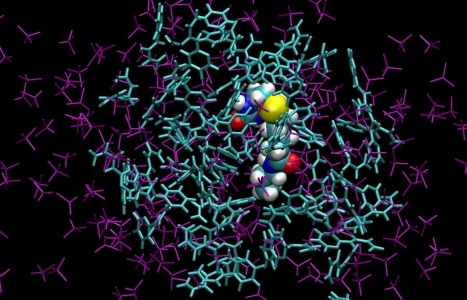Dust control formulation

Dust control is a crucial factor affecting the health of humans and animals in various activities that include but are not limited to:
- Horse arenas
- Sport fields
- Transportation
- Unpaved roads and pavements
- Docking yards
- Building yards

Main health related effects come from small [<10 microns] and very small [<2.5 microns] particles that become airborne. Depending on the case, the size distribution of soil/ dust particles can range between 1- 1000 microns. An additional hazard with small particles below 50 microns is that they are not visible and their risk is hardly acknowledged. The main atmospheric pollution hazards come from PM2.5 and PM10.0.
Currently many products exist in the market that try to combat the problem by bonding to soil particles, creating in depth penetration of polymeric fibers, moisturizing the soil surface and even creating a protective shield/ layer on the soil surface. Depending on the desired application different pathways and materials are chosen. For example, in horse arenas, hygroscopic salts are not the best option since they can induce severe health effects of the horses by inhalation. Some surfactant-based formulations are not appropriate for climates with often or heavy rains since they tend to be easily removed from the soil surface. Petroleum based solutions are not appropriate [as the hygroscopic salts as well] close to vegetation areas as studies have confirmed their poisonous effect on it.
Most solutions in the market depend on one of the following approaches:
n Solutions that aim at soil binding and penetration in depth [3D stabilization]. Such solutions are based on co-polymers of styrene – butadiene and other co-polymers. Silicone and SLR can also be used as an addition to those. Ionic strengtheners, dispersants and other additives are always used in such formulations
n Hygroscopic salts such as Calcium Chloride that absorb moisture from air OR are watered on a standard basis and thus maintain a high water content on soil thus preventing dust particles from escaping in the air
n Organic polymer based solutions that are green, non-toxic, bio-degradable, that bind to the negatively charged soil molecules. This solution provides many advantages but also has some shortcomings such as failures under heavy rains
n Synthetic polymer based solutions that can be very effective but with significant effect on the environment since they are neither green or bio-degradable and their accumulation can prove quite problematic.
n Electrochemical stabilizers that can also prove very efficient on specific soils, especially those with high mineral content; however they can be more expensive and inefficient at soils with low mineral content.
Based on the above understanding, we provided three novel formulations with additional characteristics to our client:
- A polymeric based, anionic surfactant assisted with antiviral properties and enhanced mechanical resistance
- A polymeric blend based, anionic surfactant blend assisted, with antiviral properties and enhanced mechanical performance
- An inorganic crystal – polymeric fiber based, silane bonded, with antiviral, UV and thermal resistance modifications
